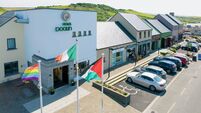The sands of time pass slowly in Venezuela’s Los Roques

But Los Roques, an archipelago of hundreds of islands and rocks, and a national park, is not widely known about outside Venezuela.
Los Roques is beautiful and unadulterated, like a castaway island in a cartoon strip, with green, glassy lagoons, quiet coves and miles and miles of pristine, soft, white sand. Apart from the islands’ physical beauty, their great glory is that they’re uninhabited.










